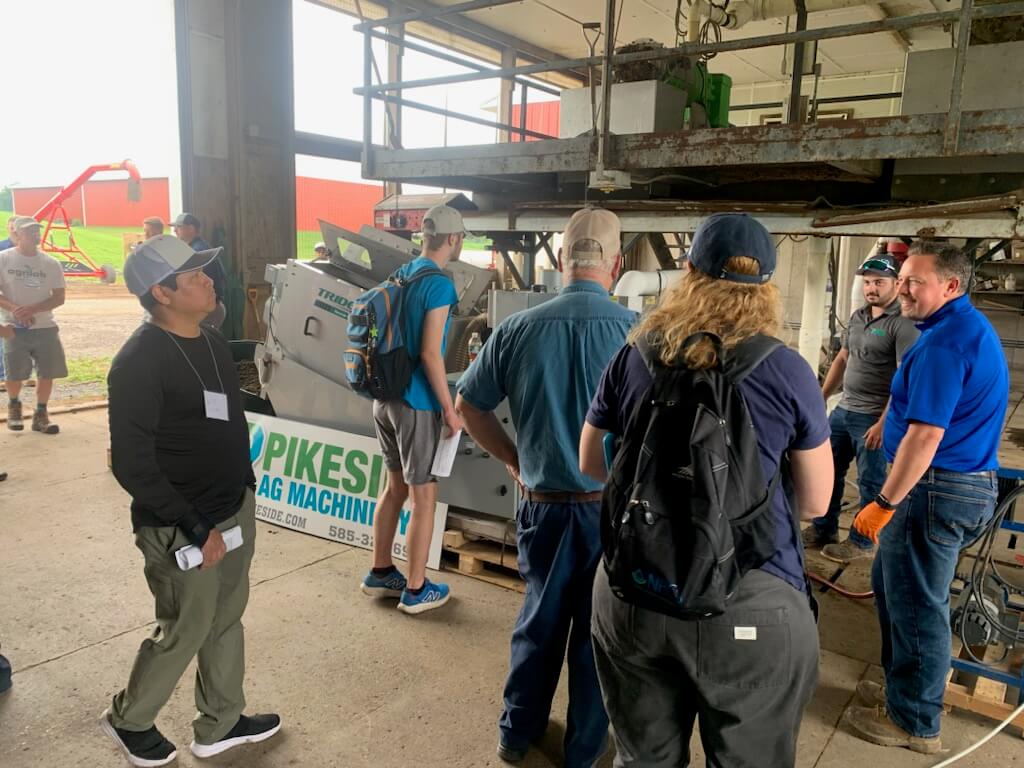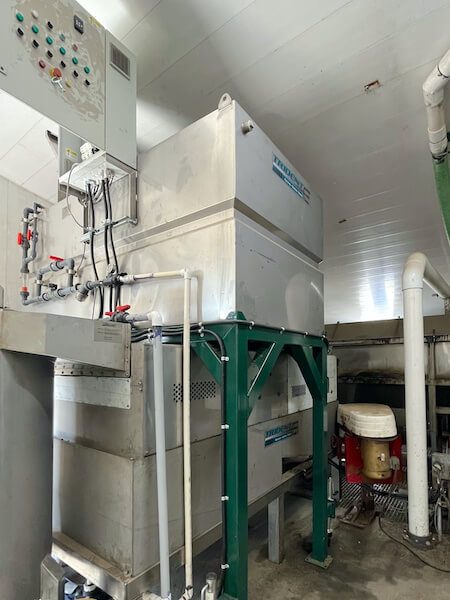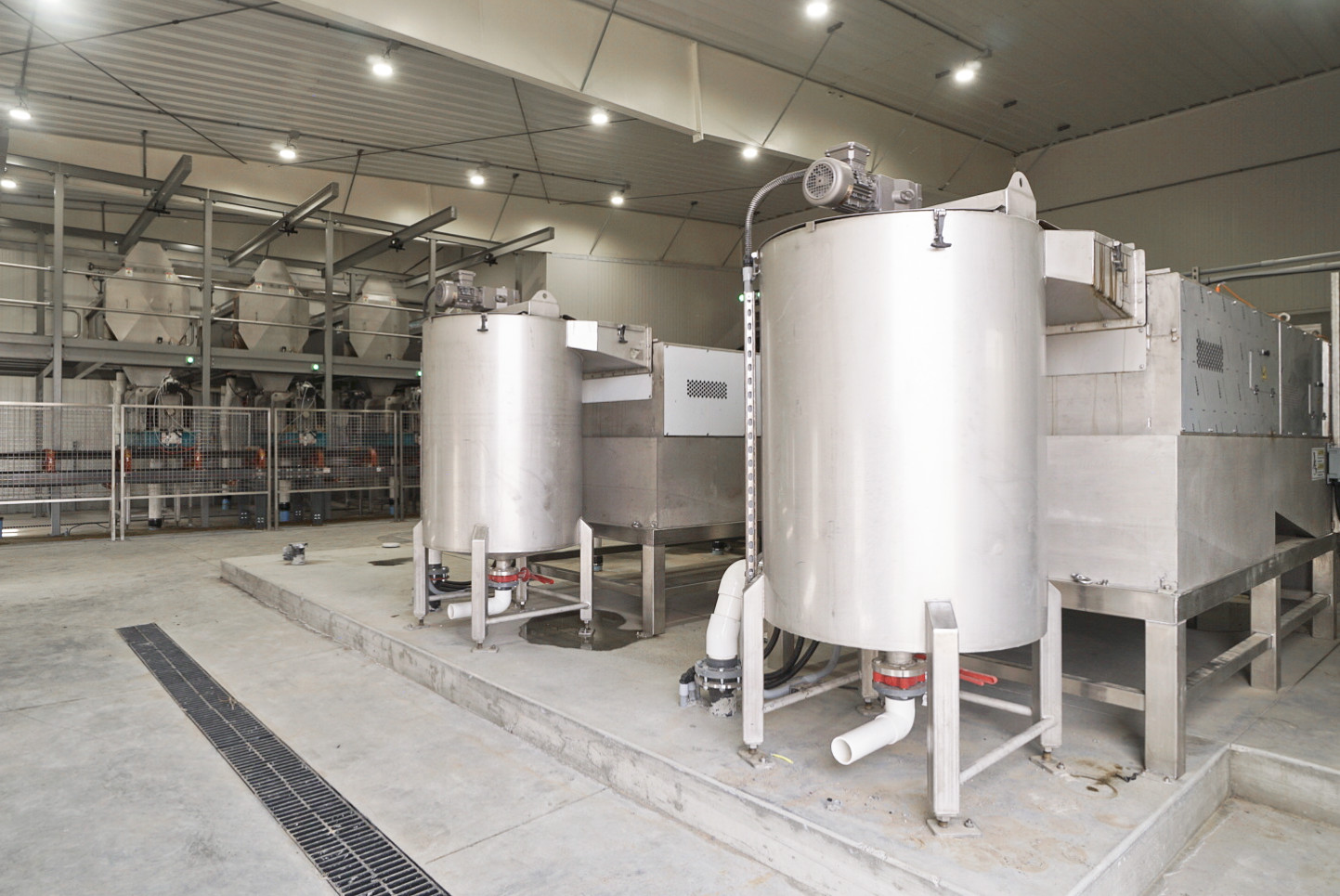Earlier this month our team had an opportunity to showcase advanced manure treatment with the…
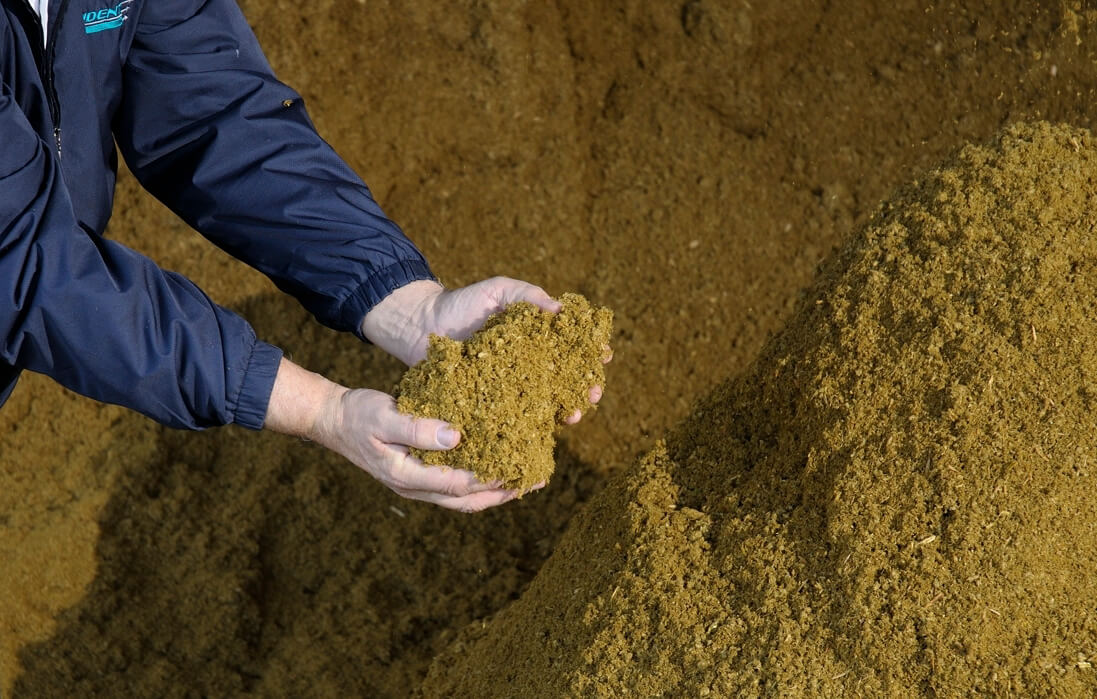
Dairy cows love manufactured bedding
Manufactured bedding from dairy cow manure – December 14th, 2021. Recycling valuable components from manure is a great way to practices zero-waste agriculture. But to be up front; there is a big difference between squeezed manure solids and manufactured bedding. Let’s look at some of the process ingredients that ensure a high quality bedding product.
Conditioning of manure is key
The manure coming from the barns first undergoes a conditioning and separation treatment in the Trident Rotary Screen Conditioner. Rinsing the manure helps clean the fibrous material. This conditioning step is critical for the quality of the final bedding product as it helps remove the very fine particles, which don’t offer the benefits that the coarse fiber offer. In fact, it is understood that these fine particles can contribute to hygiene issues. Next, the treatment focuses on capturing specifically the large fiber. Adequate screen sizes help classify the material and only allow the large fiber to be separated from the manure. In the next step the concentrated fiber is fed into a screw press for a dewatering step. The hopper of the screw press is positioned directly underneath the screen’s discharge outlet, allowing the separated fiber to simply fall into the hopper. No additional conveyance is needed for this step.
Dewatering the fiber
The rotating screw auger compresses the material. This releases liquid, which is discharged as effluent through the small screen openings. The air pressure controlled end plug allows the operator to control the fiber’s dry matter. The dry and clean fiber (approximately 35% dry matter) is then conveyed to storage and available for reuse as bedding material in the barn. Without requiring additional treatment. More basic manure separation practices squeeze the manure or separate only a small portion of the water (e.g. roller press or slope screens), with the result that most of the original manure characteristics remain. In fact, if this material is put back in the stalls and gets wet, it very much behaves like manure again. And that of course has consequences for cow comfort and health.
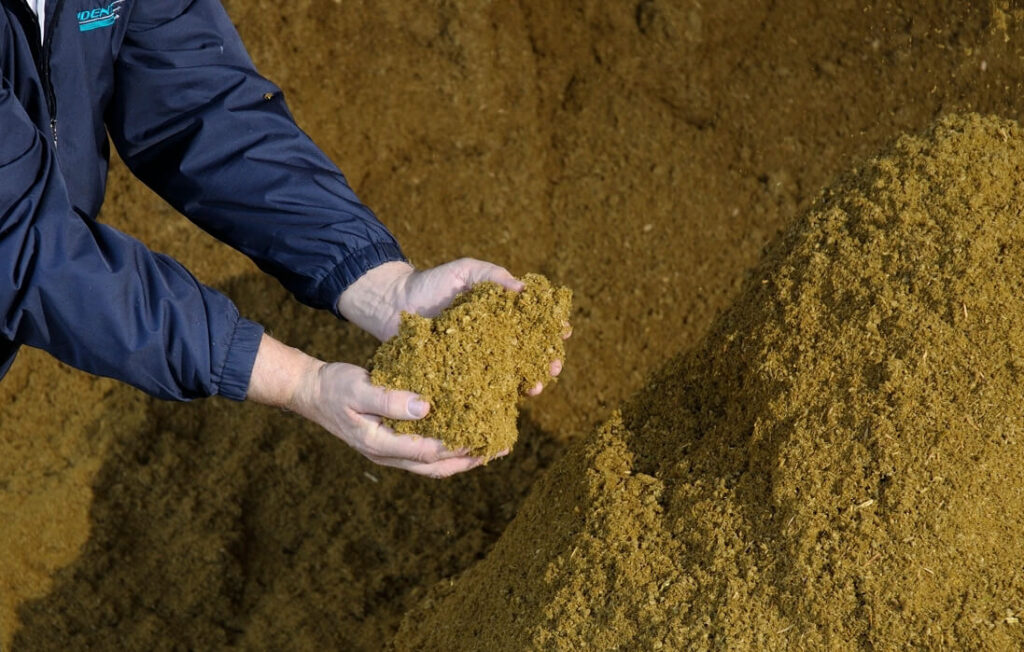
THE DIFFERENCE
Trident’s treatment process returns a truly manufactured bedding product. Its performance in terms of draining ability, micro climate regulation, resting surface or the reduced risk of particles adhering to a cow’s skin or utter, is second to none. What about other bedding materials like sand or saw dust? Well, the choice often depends on personal preference, the original barn design or local supply. It’s no secrete that sand causes challenges for the manure system downstream. And as the supply of other bedding materials may become difficult to manage, the Trident Bedding Recovery system is a proven and affordable choice that helps dairy farmers reduce their operating costs and maintain a high level of cow comfort. The recent generation of Trident bedding systems are installed with stainless steel components, platform and automation system. The system is fully scalable for all dairy sizes and can be run 24/7. The bedding system also integrates seamlessly with Trident’s secondary treatment options that process the remaining effluent (e.g. phosphorus recovery, water reclamation). For more details call 1.800.799.3740 or visit
Image: This is older footage and doesn’t show the latest generation of Trident’s separation equipment, but it’s a good illustration of the important treatment steps.

